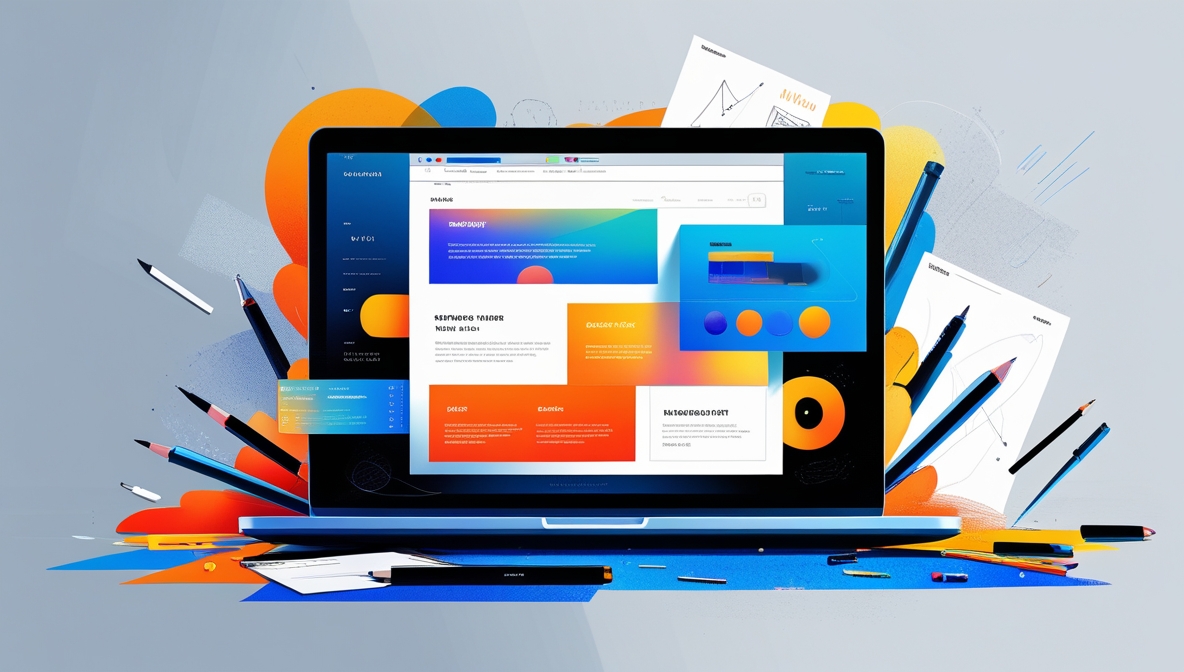Interactive web elements are essential for creating engaging and intuitive user experiences. By using the right techniques and tools, developers can build dynamic and functional components that enhance usability and performance. This guide outlines the best practices for designing interactive web elements and highlights the use of SVG for animations and interactivity.
Prioritize Usability
Interactive elements should be easy to understand and use. Always consider the following:
- Consistency: Maintain uniformity in design patterns for buttons, links, and icons.
- Feedback: Provide visual or auditory cues when users interact with an element (e.g., hover effects, color changes, or sound).
- Accessibility: Ensure elements are accessible for users with disabilities by adhering to WCAG guidelines. Use ARIA labels, proper contrast ratios, and keyboard navigation support.
Use Scalable Vector Graphics (SVG)
SVG is a powerful format for creating interactive and animated web elements. It offers several advantages:
- Scalability: SVG images retain quality at any size, ensuring sharp visuals on all screen resolutions.
- Lightweight: Files are smaller compared to other formats, reducing load times.
- Interactivity: SVG allows integration of animations, tooltips, and hover effects with ease using CSS and JavaScript.
Examples of SVG Applications:
- Animated buttons that morph or change colors.
- Dynamic infographics with hoverable data points.
- Icons that respond to user actions, such as spinning or bouncing.
Focus on Performance
Slow-loading elements frustrate users and lead to higher bounce rates. Optimize interactive elements with these tips:
- Lazy Loading: Load elements only when they are in the viewport.
- Minification: Compress CSS, JavaScript, and SVG files to reduce their size.
- Code Efficiency: Avoid overly complex scripts that might slow down rendering.
- Browser Compatibility: Test animations and interactions across multiple browsers to ensure consistent performance.
Craft Intuitive Animations
Animations can guide users and make interfaces more enjoyable. Follow these principles:
- Purpose-Driven: Every animation should serve a purpose, such as indicating a loading state or highlighting an action.
- Timing and Easing: Use smooth transitions with appropriate timing functions to make animations feel natural. Tools like cubic-bezier easing curves can help achieve the desired effect.
- Subtlety: Avoid overly flashy or excessive animations, as they can distract users.
Techniques for Animation:
- Use CSS keyframes for simple transitions.
- Implement JavaScript libraries like GSAP for advanced animations.
- Leverage SVG animations for complex shapes and path transitions.
Incorporate Responsive Design
Interactive elements must adapt seamlessly to different devices and screen sizes. Consider the following:
- Fluid Layouts: Use percentages and relative units for sizing elements.
- Touchscreen Compatibility: Ensure buttons and links are large enough to tap comfortably.
- Viewport Testing: Check how interactive elements perform on various devices, including smartphones, tablets, and desktops.
Highlighting the importance of responsive design ensures your website functions seamlessly across all devices, offering a consistent user experience regardless of screen size.
Leverage Microinteractions
Microinteractions are small, focused animations or responses triggered by user actions. Examples include:
- Hover effects that reveal additional information.
- Toggle switches that change states with a sliding animation.
- Scroll-based animations that progress as the user navigates the page.
Best Practices:
- Use context-specific triggers to activate microinteractions.
- Ensure transitions are quick, typically under 300 milliseconds.
- Test for smoothness and responsiveness on different devices.
Design for Accessibility
Interactive elements must be usable by all individuals, including those with disabilities. Ensure:
- Keyboard Accessibility: Users can navigate and activate elements using keyboard shortcuts.
- Readable Content: Use legible fonts and clear labeling for buttons and links.
- Alternative Text: Provide alt text or ARIA roles for non-text elements.
Website accessibility is not just about compliance; it improves usability for all users, fostering inclusivity and a better overall experience.
Test and Iterate
Consistent testing helps refine interactive elements for better performance and user satisfaction. Methods include:
- User Testing: Gather feedback from real users to identify pain points.
- A/B Testing: Experiment with variations of an element to see which performs better.
- Performance Monitoring: Use tools like Lighthouse or WebPageTest to track loading times and responsiveness.
Employ Modern Frameworks and Libraries
Frameworks and libraries can streamline the creation of interactive web elements. Consider:
- React or Vue: For building component-based interactivity.
- Framer Motion: For advanced animations and transitions in React projects.
- D3.js: For creating interactive data visualizations with SVG.
Iterate Visual Design
Visual design directly impacts the effectiveness of interactive elements. Pay attention to:
- Contrast and Colors: Use contrasting colors for better visibility and call-to-action emphasis.
- Whitespace: Provide enough spacing to make elements distinguishable and easy to interact with.
- Typography: Select fonts that are readable and consistent with the design theme.
By following these practices, developers and designers can create interactive web elements that are visually appealing, functional, and accessible. SVG remains a valuable tool for animations and interactivity, allowing for scalable and lightweight designs that enhance user engagement.






